Eating is merely repetition!
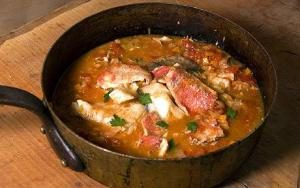 Culinary culture is a concept travelling with people. Consider a fish dish called Buğulama in Turkey, and Burdeto in Greece, and Brodetto in Italy, also Broeto in Venice, a bit further in France Bouillabaisse, and in Spain it is called Suget. We are still cooking such dishes that travelled around the world. Fish is the same fish, so is meat is the same meat. Eating is merely repetition.
Culinary culture is a concept travelling with people. Consider a fish dish called Buğulama in Turkey, and Burdeto in Greece, and Brodetto in Italy, also Broeto in Venice, a bit further in France Bouillabaisse, and in Spain it is called Suget. We are still cooking such dishes that travelled around the world. Fish is the same fish, so is meat is the same meat. Eating is merely repetition.
What comes to your mind about the Greek cuisine?
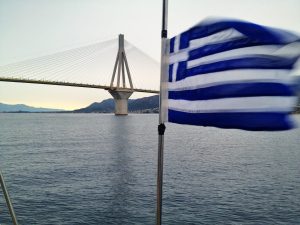 Octopus, calamari, and above all moussaka come to my mind. However, Greek cuisine has many more diverse and unique dishes. Consider this:
Octopus, calamari, and above all moussaka come to my mind. However, Greek cuisine has many more diverse and unique dishes. Consider this:
If I ask you about the Italian cuisine, anybody would at least know pasta. But if you are more acquainted with the cuisine, you would say Linguini, Spaghetti, or Tagliatelle. These are all different names for pasta with various dough breadths and shapes, and you can be sure that there are many more types of pasta that you’ve never heard of. And pasta as you can imagine is the general name for all these different dishes. Also, be aware that in addition to the hundreds of sauces, cutting shapes and names under the umbrella of ‘pasta’, it is still not enough to describe the regional recipes counting up to hundreds.
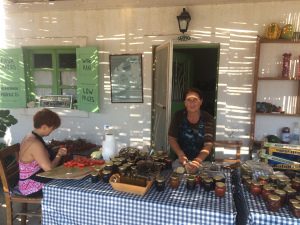 Pizza has also a similar story. Today, Pizza is associated with the whole of Italy, but it is actually a Neapolitan. In Italy, the venues selling pizza are not called restaurants, but pizzerias. Italian culinary schools don’t teach how to cook Pizza. Because it’s the Pizza masters’ job. Just like ‘Kebab’ in Turkey. Lahmacun and kebab originates from one single region from south east of Turkey. Lahmacun is best cooked by lahmacun masters. You can’t find lahmacun in Turkish culinary literature, we have “Ottoman” cuisine first. just like pizza in Italy. But Italian and Turkish cuisine is best known for these dishes, pizza and pasta in Italy, and lahmacun and kebab in Turkey.
Pizza has also a similar story. Today, Pizza is associated with the whole of Italy, but it is actually a Neapolitan. In Italy, the venues selling pizza are not called restaurants, but pizzerias. Italian culinary schools don’t teach how to cook Pizza. Because it’s the Pizza masters’ job. Just like ‘Kebab’ in Turkey. Lahmacun and kebab originates from one single region from south east of Turkey. Lahmacun is best cooked by lahmacun masters. You can’t find lahmacun in Turkish culinary literature, we have “Ottoman” cuisine first. just like pizza in Italy. But Italian and Turkish cuisine is best known for these dishes, pizza and pasta in Italy, and lahmacun and kebab in Turkey.
Likewise, it would be a shame saying that Greek cuisine consists of merely Moussaka, octopus salad in vinegar, dried and grilled octopus, Tzatziki and Greek salad, all of which you can find in any touristic restaurant. There is a lot more to Greek cuisine.
There is an obvious similarity between the names of these dishes in Greek and Turkish. They are also similar in taste.
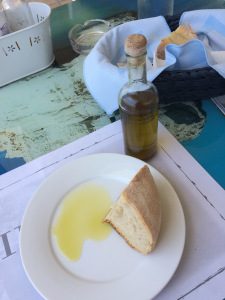 Some extra Béchamel sauce on the Turkish Moussaka converts it into Greek; some more water in Greek Tzatziki makes it Turkish! An important ingredient of the Greek salad is Feta cheese, which is in Turkish cuisine a sort of ‘white cheese’, only a bit harder. That’s totally expected, isn’t it? We have been sharing a sea, a coast, a history. Although we use different alphabets, I would say that we share a language as well; Turks call orange “Portakal”, Greek people call it “Portakali”. Turks call watermelon “Karpuz”, Greeks call it “Karpuzi” ..just look at the names of the dishes stated above.
Some extra Béchamel sauce on the Turkish Moussaka converts it into Greek; some more water in Greek Tzatziki makes it Turkish! An important ingredient of the Greek salad is Feta cheese, which is in Turkish cuisine a sort of ‘white cheese’, only a bit harder. That’s totally expected, isn’t it? We have been sharing a sea, a coast, a history. Although we use different alphabets, I would say that we share a language as well; Turks call orange “Portakal”, Greek people call it “Portakali”. Turks call watermelon “Karpuz”, Greeks call it “Karpuzi” ..just look at the names of the dishes stated above.
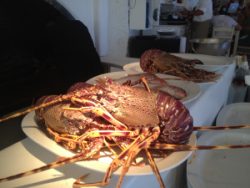 The most delicious food you can encounter on the islands is unsurprisingly sea food. Greeks know how to cook a shellfish. The most widely used method is to grill. On huge grills, they cook any sort of fish, shellfish or calamari in a very skilled manner. Don’t think it’s very easy! If you over-cook sea food just a little, you end up eating rubber! Therefore cooking temper is very important.
The most delicious food you can encounter on the islands is unsurprisingly sea food. Greeks know how to cook a shellfish. The most widely used method is to grill. On huge grills, they cook any sort of fish, shellfish or calamari in a very skilled manner. Don’t think it’s very easy! If you over-cook sea food just a little, you end up eating rubber! Therefore cooking temper is very important.
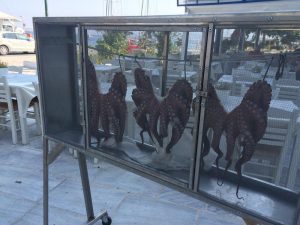 The Greeks are very fond of octopus. You can see octopuses hanging from the ceiling of almost any restaurant. They are dried under the sun with the sea water on them. And then, they are served on your table after the cook grill them. Their taste changes according to the taste of the person eating them. If you like a soft taste then you should the cook to boil them before grilling. It would be a bit harder, but since it would keep its salt, you’d feel a different sea taste.
The Greeks are very fond of octopus. You can see octopuses hanging from the ceiling of almost any restaurant. They are dried under the sun with the sea water on them. And then, they are served on your table after the cook grill them. Their taste changes according to the taste of the person eating them. If you like a soft taste then you should the cook to boil them before grilling. It would be a bit harder, but since it would keep its salt, you’d feel a different sea taste.
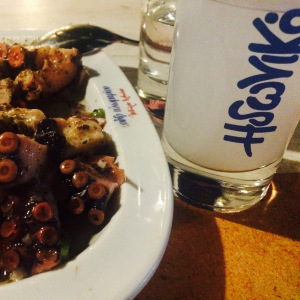 When considering from this viewpoint, it is sad to say how negligent the Turks on the other coast of the sea are about sea food. Leave cooking to one side, there aren’t significant number of sellers. If you ask for mussel at a fish restaurant in Turkey, you’d most probably receive only rice stuffed mussels. You’d rarely find Jumbo shrimps, and even if you do, you’d have to pay a fortune. Fortunately, we, Turks, like octopus as well, but cut out its buttons and make a cold salad out of it; and never try to find other ways to make a delicious taste out of it.
When considering from this viewpoint, it is sad to say how negligent the Turks on the other coast of the sea are about sea food. Leave cooking to one side, there aren’t significant number of sellers. If you ask for mussel at a fish restaurant in Turkey, you’d most probably receive only rice stuffed mussels. You’d rarely find Jumbo shrimps, and even if you do, you’d have to pay a fortune. Fortunately, we, Turks, like octopus as well, but cut out its buttons and make a cold salad out of it; and never try to find other ways to make a delicious taste out of it.
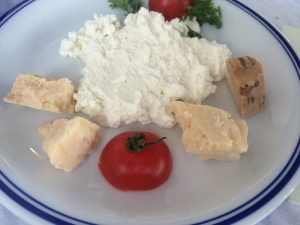 What else did I see on the Cyclades? Cheese, of course. Cheese is a strange thing that people produce their cheese in their own way and naturally give original names in every corner of the world, each region and. Cheese of course is not limited to the Italian Parmigiano, Greek Feta, French Roquefort, or Turkish Ezine. There are hundreds of types of cheese. The Greek islands, each have its own cheese.
What else did I see on the Cyclades? Cheese, of course. Cheese is a strange thing that people produce their cheese in their own way and naturally give original names in every corner of the world, each region and. Cheese of course is not limited to the Italian Parmigiano, Greek Feta, French Roquefort, or Turkish Ezine. There are hundreds of types of cheese. The Greek islands, each have its own cheese.
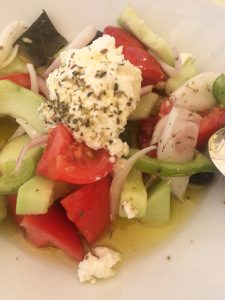 The most famous are Feta and Mizithra. I am not sure for what political or economic reason Feta has been distributed around the world from Caribbean’s to a small corner shop in a forgotten part of the world, but our Ezine or Thracian white cheese stayed local. Honestly, I have bought Feta in Panama and in Brazil.
The most famous are Feta and Mizithra. I am not sure for what political or economic reason Feta has been distributed around the world from Caribbean’s to a small corner shop in a forgotten part of the world, but our Ezine or Thracian white cheese stayed local. Honestly, I have bought Feta in Panama and in Brazil.
The Greek cheese is a bit similar to our cheese. I mean it is has similar texture and taste to our cheese rather than those of the European cheese. Most of them are made of sheep or goat milk. And again most of them originates from the Crete, and the smaller islands have many more varieties of it. Some of the least known Greek cheese are Anthotyros, Galotiri, Graviera, Kasseri, Kefalograviera, Kefalotyrı, Kapnisto Metsovone, Ladotyri, Manouri, Metsovone. Hellim in Turkish, originating from Cyprus, is found under the name of Halloumi. Another merry memory of mine is that on the Western Atlantic tip whilst I couldn’t find the famous Italian Parmesan, but I could find Halloumi.
If you order a cheese plate on the Greek islands, you had better ask the waiter about the ingredients of the cheese. They would introduce their cheese with pleasure.
What else?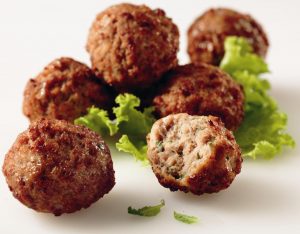
- Just like us, their meatballs are famous, e.g. Keftedakia. It is made very similar to the method our mothers prepare it: by watering stale bread but they are not as much fond of cumin. They use mint, thyme, and lemon juice.
- Louloudokeftedes, an appetizer, is grilled zucchini blossoms with cheese inside.
 Just like Turkish mücver! And its name is Kolokythokeftedes. Keftedes as I’ve mentioned means meatballs, and this is basically ‘zucchiniballs’. The rest of Europe, and even the Americas cook mücver but they call it zucchini cake, and their taste are different due to their ingredients. However, the Greek mücver is identical with the Turkish one. They as an extra put potatoes in it.
Just like Turkish mücver! And its name is Kolokythokeftedes. Keftedes as I’ve mentioned means meatballs, and this is basically ‘zucchiniballs’. The rest of Europe, and even the Americas cook mücver but they call it zucchini cake, and their taste are different due to their ingredients. However, the Greek mücver is identical with the Turkish one. They as an extra put potatoes in it.- Tarama meatball, which is Taramokeftedes is the grilled meatball version of the fish roe.
- Kremydokeftedes, ‘onionballs’ (Greeks like fried food).
- Dolmades! Can you guess? Dolmades Yalantzi is made of vine leaves which is used in cooking only by the Greeks and Turks. (we call it “Dolma” means “stuffed!”)
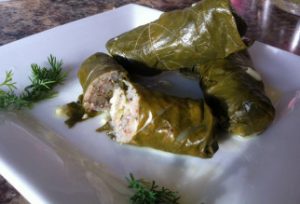
- Tyropitakia, Spanakopitakia, Kalitsounia are borepastries with spinach and cheese.
- Fava! Made of yellow split lentil, best grown in Santorini due to its volcanic soil. Served as a warm appetizer, Fava is peculiar to Santorini
- The olive oil dishes are also similar in Greek and Turkish cuisines. Okra and artichoke are the famous dishes with olive oil.
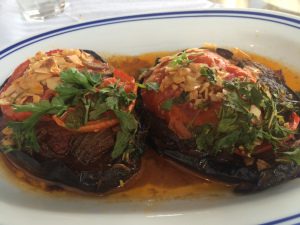
- Imam Bayildi! Just like in Turkish. Some extra béchamel sauce on the aubergine makes it Papoutsaika which means little shoe.
- Kritharaki, Lazania, Hylopites are the types of Greek pasta inspired by the other coastal Greeks’ neighbour, Italy.
- Kleftiko, is a special lamb dish.
- Lamb on skewer: Paidaika
- İzmir meatbalss? The same in Turkey: Soutzoukakia, etymologically means ‘from Smyrna’.
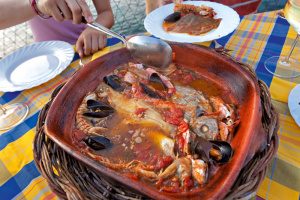 Burdeto, the sister of the Italian Brodetto. It is anyways from the west, Korfu. Scorpionfish cooked in Venetian tomato sauce. They add octopus as well. If you add shellfish, it would be the real Brodetto, or in Tuscan saying Caccuicco, or the French Bouillabaisse. All are the same, Balık Buğulama.
Burdeto, the sister of the Italian Brodetto. It is anyways from the west, Korfu. Scorpionfish cooked in Venetian tomato sauce. They add octopus as well. If you add shellfish, it would be the real Brodetto, or in Tuscan saying Caccuicco, or the French Bouillabaisse. All are the same, Balık Buğulama.- Garides Saganaki. In Turkish, sahanda karides! Just like shrimps stew, they cook the shrimps with tomatoes and pepper but put Feta on it rather than kaşar
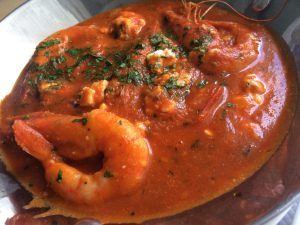
If it was pleasing for you until now , you might say the Greek cuisine is like a combination of the Turkish and Italian cuisines. And you are very mistaken! Maybe the Italians and Turks were affected by the Greek cuisine and these dishes might have travelled from land to land and sea to sea differing little, who knows?